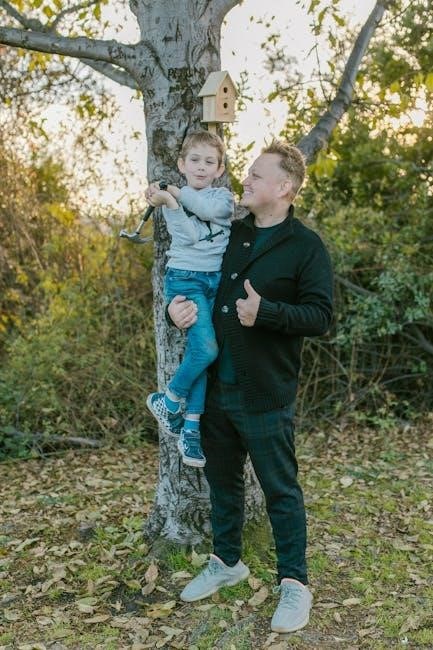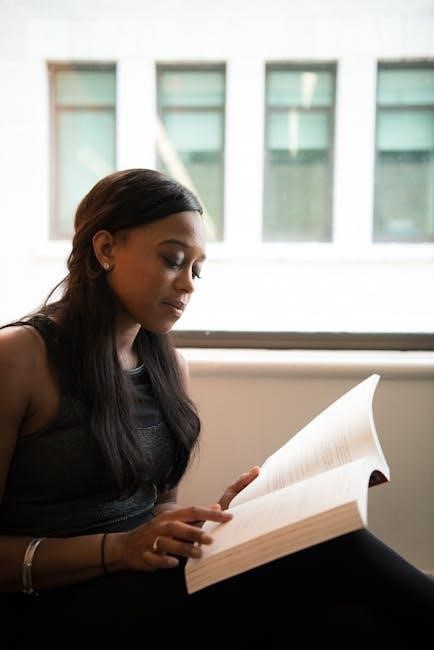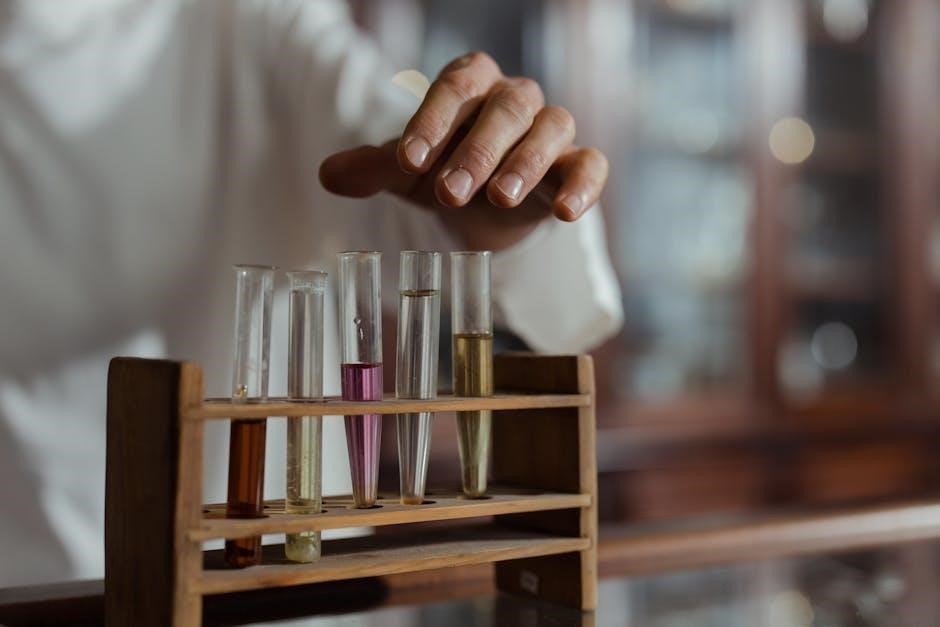black & decker manuals
Black & Decker manuals are essential for homeowners and professionals alike. Available in PDF format‚ they cover a wide range of products‚ from appliances like coffee makers to power tools. These guides ensure safe and efficient product use while enhancing performance and functionality for all users.
Overview of Black & Decker Products
Importance of Manuals for Proper Usage
Black & Decker manuals are crucial for safe and effective product use. They provide step-by-step instructions for setup‚ operation‚ and maintenance‚ ensuring optimal performance and longevity. Manuals also guide users through troubleshooting and repairs‚ preventing misuse and potential hazards. Adhering to these guidelines guarantees reliability and enhances user confidence in their tools and appliances.
Furthermore‚ manuals offer valuable tips on advanced features and best practices‚ helping homeowners and professionals achieve professional-grade results. Proper use of Black & Decker products is only possible by following the instructions provided in their comprehensive manuals‚ making them an indispensable resource for any user.

Types of Black & Decker Manuals
Black & Decker manuals include user guides‚ care instructions‚ and service documentation. User manuals provide setup and operation details‚ while care guides help maintain product longevity. Service manuals offer detailed troubleshooting and repair information for professionals and DIY enthusiasts.
User Manuals
User manuals for Black & Decker products provide essential instructions for setup‚ operation‚ and troubleshooting. They include safety guidelines‚ maintenance tips‚ and optimal usage techniques. Available for free online or as downloadable PDFs‚ these guides ensure users can maximize product performance and extend its lifespan while adhering to safety standards.
Care Guides
Black & Decker care guides ensure optimal maintenance and preservation of product functionality. Offering detailed instructions for cleaning‚ storage‚ and regular upkeep‚ these guides help prolong the life of your tools and appliances. Available as free downloads from ManualsBrain‚ they provide safe and efficient practices for product care. Follow these guidelines to prevent damage and ensure peak performance over time.
Service Manuals
Black & Decker service manuals provide essential technical details for repairs and troubleshooting. These resources‚ available online‚ include schematics and explanations for fixing complex issues. Service manuals ensure proper maintenance and longevity‚ helping professionals and DIY enthusiasts perform efficient repairs. For vintage models‚ VintageMachinery.org and ManualsBrain offer rare and reprinted service guides‚ making restoration and upkeep easier than ever.

Where to Find Black & Decker Manuals
Black & Decker manuals are accessible online through platforms like ManualsBrain‚ which offers PDF downloads‚ and VintageMachinery.org for vintage models. Manufacturer directories and databases also provide comprehensive resources for finding the exact manual you need for any Black & Decker product.
ManualsBrain: Online Access and Downloads
ManualsBrain offers extensive access to Black & Decker manuals‚ with over 3‚362 PDF guides available for download. Users can find detailed instructions for appliances like blenders‚ coffee makers‚ and more. The platform also provides DIY repair guides and instructional videos to help users maintain and optimize their Black & Decker products effectively.
VintageMachinery.org: Vintage Manuals and Reprints
VintageMachinery.org specializes in vintage Black & Decker manuals for collectors and enthusiasts. Users can submit photos of their machines and add them to the manufacturer registry. Contact the registry steward for additional information or support. This platform is a unique resource for finding rare and historical manuals‚ ensuring the preservation of Black & Decker’s legacy and offering valuable insights for tool historians and restorers alike.
Manufacturer Directories and Databases
Manufacturer directories and databases are invaluable resources for locating Black & Decker manuals. These platforms offer convenient access to a wide range of user manuals‚ care guides‚ and technical literature. Users can search by product model to find detailed diagrams and instructions for repair and maintenance. Additionally‚ these directories provide DIY manuals and instructional videos‚ ensuring that users and professionals alike can operate‚ maintain‚ and troubleshoot Black & Decker products effectively and safely.
Black & Decker Manuals by Category

Black & Decker Manuals by Category
Black & Decker manuals are organized by product categories‚ simplifying access to essential information. Appliance‚ power tool‚ and vacuum cleaner manuals are available‚ ensuring users troubleshoot‚ maintain‚ and operate equipment effectively. Exploring these resources promotes productivity and safety across all devices.
Appliance Manuals
Black & Decker appliance manuals provide detailed instructions for operating and maintaining devices like air compressors‚ conditioners‚ and blenders. These guides include troubleshooting tips‚ maintenance schedules‚ and safety precautions to ensure optimal performance. Whether you own a Coffee Maker or a Blender & Grinder‚ these manuals help users understand product features and care. Their comprehensive content ensures safe and efficient appliance use for homeowners and professionals alike.
Power Tool Manuals
Black & Decker power tool manuals offer comprehensive guidance for operating and maintaining tools like routers and grinders. These guides provide detailed instructions on performance optimization‚ safety tips‚ and maintenance schedules. From variable speed routers to powerful drills and vacuum cleaners‚ the manuals ensure users can achieve professional results while adhering to safety standards. Clear diagrams and troubleshooting advice enhance user experience and satisfaction.
Vacuum Cleaner Manuals
Black & Decker vacuum cleaner manuals provide detailed instructions for optimal performance and maintenance. These guides help users understand how to assemble‚ operate‚ and care for their vacuum cleaners‚ ensuring longevity and efficiency. From cleaning filters to troubleshooting common issues‚ the manuals are designed to enhance user experience and maintain product functionality.

Specific Models and Their Manuals
Black & Decker manuals offer detailed instructions for specific models‚ ensuring users can operate and maintain their equipment effectively. These guides cover assembly‚ troubleshooting‚ and repair‚ providing actionable insights for optimal performance and longevity.
Quick Vise Model 79-080
The Quick Vise Model 79-080 manual‚ published by Black & Decker in 1983‚ provides comprehensive guidance for this versatile hand tool. This vintage manual‚ available in the public domain‚ covers assembly‚ safety protocols‚ and proper operation techniques. It is a valuable resource for collectors and enthusiasts seeking detailed instructions for maintaining this classic tool.
Other Popular Black & Decker Models
Black & Decker offers a diverse range of popular models‚ including air compressors‚ air conditioners‚ and power tools. Manuals for these products are accessible online via ManualsBrain and VintageMachinery.org‚ providing detailed instructions for safe and efficient use. Further‚ resources like Manufacturer Directories and DIY repair guides ensure users can maximize product performance while adhering to safety standards.

Benefits of Using Black & Decker Manuals
Black & Decker manuals provide essential guidance for maximizing product performance and ensuring safe usage. Proper adherence to instructions enhances functionality‚ prevents damage‚ and extends the lifespan of tools and appliances‚ making them indispensable for both novice and expert users.
Enhanced Product Performance
Black & Decker manuals provide detailed instructions to maximize product efficiency and longevity. By following guidelines‚ users ensure tools and appliances operate at peak performance. Manuals often include tips for optimal setup‚ usage‚ and maintenance‚ helping users achieve the best results. Proper adherence to instructions also prevents misuse‚ resulting in safer and more reliable operation across various applications like air compressors or routers.
Guidance for Repairs and Maintenance
Black & Decker manuals offer essential guidance for repairs and maintenance‚ ensuring tools and appliances function reliably and efficiently. These guides provide step-by-step instructions for tasks such as troubleshooting‚ part replacements‚ and routine upkeep‚ helping users extend product lifespan and prevent malfunctions. They often include detailed diagrams‚ maintenance schedules‚ and safety tips‚ ensuring repairs are performed correctly and safely. By following the manual guidelines‚ users avoid voiding warranties and enhance tool performance‚ keeping their Black & Decker products in top condition. These resources are readily available online‚ making repairs and maintenance straightforward for all users.

Black & Decker Manuals for Professionals
Professionals depend on comprehensive specialized equipment manuals‚ providing clear instructions for industrial tools to ensure optimal efficiency and precision in demanding work environments.
Specialized Equipment Manuals
Black & Decker provides detailed specialized equipment manuals for industrial tools like air compressors‚ vacuum cleaners‚ and power tools. These manuals ensure professionals operate machinery safely and effectively‚ while also offering guidance on maintenance and troubleshooting for optimal performance and longevity.
Guide for Industrial Use
Black & Decker manuals provide essential guidance for industrial equipment operation‚ safety protocols‚ and maintenance. These guides ensure professionals maximize productivity and meet industry standards while using Black & Decker tools‚ such as air compressors and power tools. The manuals include detailed instructions for industrial applications‚ ensuring equipment longevity and optimal performance in demanding environments.

Black & Decker Accessories Manuals
Black & Decker accessories manuals provide detailed guidelines for using optional parts and attachments. These resources ensure compatibility and optimize performance for various tools and appliances‚ enhancing productivity and functionality for users.
Compatibility and Usage Guidelines
Black & Decker accessories manuals provide essential information to ensure safe and efficient use of additional parts with their products. These guides help users understand compatibility and proper installation‚ enabling optimal performance while preventing damage or malfunctions. By following these guidelines‚ users can maximize productivity and maintain their tools effectively.
Accessories for Enhancing Productivity
Black & Decker accessories expand the functionality of their tools‚ enabling users to tackle diverse tasks efficiently. From specialized bits and attachments to additional parts‚ these add-ons enhance performance and adaptability. Manuals provide detailed guidance on selecting and using these accessories‚ ensuring seamless integration and optimal productivity for both professionals and hobbyists.

Vintage Black & Decker Manuals
< p>Vintage Black amp; Decker manuals offer historical insights into classic tools. Collectors often seek rare editions for their unique designs. Many can be found online through specialized repositories like VintageMachinery.org or ManualBrain.< /p>
Significance of Vintage Manuals
Vintage Black & Decker manuals provide historical insight into classic tools and appliances. Collectors and enthusiasts prize these documents for preserving the legacy of past innovations. Manuals like the Quick Vise Model 79-080 offer valuable guidance‚ reflecting design and functionality from earlier eras. They ensure that vintage equipment remains usable and appreciated today.
Where to Find Rare Vintage Manuals
Finding rare Black & Decker vintage manuals can be challenging but rewarding. Start by visiting platforms like VintageMachinery.org‚ where you can submit photos or serial numbers to locate or obtain reprints of rare manuals. Additionally‚ ManualsBrain.com offers a vast collection of downloadable PDFs‚ including vintage models. If these sources don’t yield results‚ consider exploring manufacturer directories or contacting historical equipment forums for further assistance to locate the manuals you need.
Completing your search with a detailed manual ensures you can confidently perform repairs or updates on your vintage Black & Decker equipment‚ preserving its legacy for years to come.

Black & Decker Manuals for Homeowners
These manuals provide essential DIY repair guides and safety tips‚ ensuring homeowners can maintain and optimize their Black & Decker products. Detailed instructions enhance product longevity and efficiency for hassle-free home use
Diy Repair Guides
Black & Decker DIY repair guides empower homeowners to troubleshoot and fix their appliances and tools efficiently. These guides cover step-by-step procedures for identifying issues and performing maintenance. Detailed diagrams and clear instructions ensure
safe and effective repairs‚ enhancing product functionality and.
Black & Decker manuals provide essential safety guidelines to protect users from potential hazards. Adhering to these instructions ensures proper operation and reduces the risk of accidents or equipment damage. Always consult the manual before performing repairs or maintenance to comply with safety standards and manufacturer recommendations.
Black & Decker manuals are indispensable for maximizing product performance and safety. With online access and vintage options available‚ users gain valuable insights for repairs and maintenance. Embrace these resources to ensure optimal functionality and compliance with guidelines. Happy crafting and enhanced productivity await!
Black & Decker manuals are widely available online‚ including ManualsBrain and VintageMachinery.org‚ which offer PDF downloads and vintage reprints. They provide essential information for appliances‚ power tools‚ and accessories‚ ensuring safe and efficient use. ManualsBrain‚ for instance‚ features over 3‚000 PDF guides‚ while VintageMachinery.org specializes in rare‚ historical manuals. Always refer to these resources for optimized performance and troubleshooting tips. Proper use of these guides enhances productivity and ensures compliance with safety standards for both professional and homeowner needs.
Encouragement to Utilize Manuals
Make the most of your Black & Decker products by consulting their manuals for optimal performance and safety. These resources ensure proper use‚ maintenance‚ and repairs‚ helping you get the best from your tools and appliances. Always refer to the latest editions available online‚ such as those on ManualsBrain or VintageMachinery.org‚ for reliable guidance tailored to your needs. Prioritize these manuals to achieve peak productivity and longevity for your equipment. Don’t overlook their value in enhancing your experience with Black & Decker products.


























































































